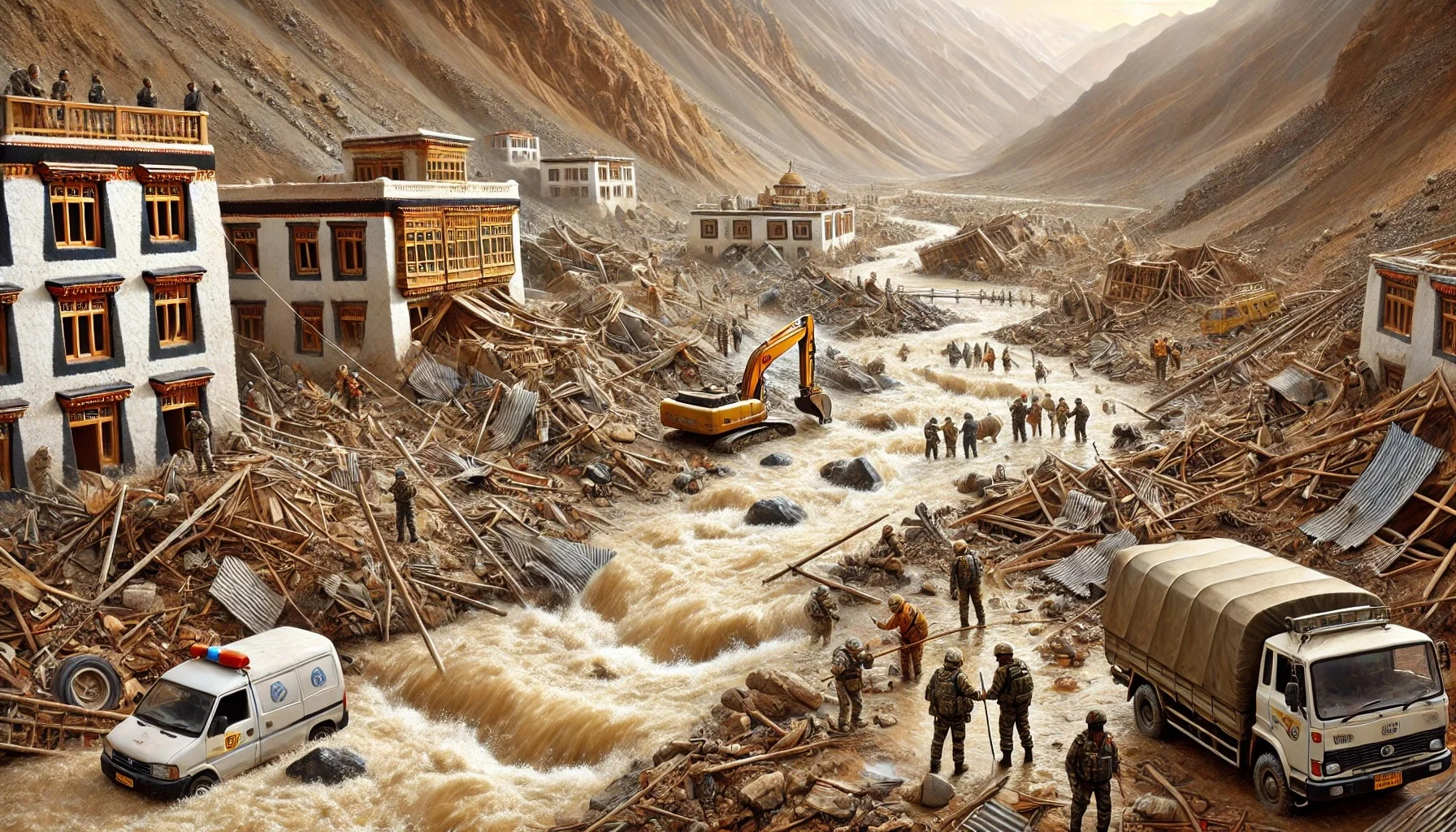
The 2010 Ladakh Floods
by: The Calamity Calendar Team
August 6, 2010
An Unexpected Deluge
Ladakh, a serene high-altitude desert in northern India, is known for its stunning landscapes and harsh climate. Characterized by minimal rainfall and vast, dry expanses, the region was unprepared for the deluge that occurred in the early hours of August 6, 2010. A sudden cloudburst—a weather phenomenon involving an extreme amount of precipitation in a very short period—hit Leh and its surrounding areas. This rare and intense storm unleashed torrents of rain, leading to catastrophic flash floods.
The Onset of Chaos
In the stillness of the early morning, the skies above Leh darkened ominously before releasing a downpour of unimaginable intensity. Within minutes, the floodwaters began to rush through the narrow valleys, transforming dry riverbeds into raging torrents. The sheer force of the water, laden with rocks, mud, and debris, quickly overwhelmed everything in its path. Villages and towns were inundated, and the main town of Leh bore the brunt of nature’s fury.
A Community Under Siege
The initial moments of the flood were marked by panic and confusion. Homes, schools, and hospitals crumbled under the force of the water, trapping residents and patients alike. The Leh-Srinagar highway, a vital lifeline for the region, was buried under landslides and debris, cutting off access to and from the area. As the waters rose, the true scale of the disaster became apparent. Over 200 people lost their lives, with many more missing. Thousands were left homeless, their possessions and livelihoods swept away.
Thanks for subscribing!
Heroes Amidst the Floods
Despite the chaos and devastation, the response to the disaster was swift and heroic. The Indian Army, known for its efficiency and bravery, spearheaded rescue operations. Paramilitary forces and local volunteers joined in, braving the treacherous terrain and ongoing bad weather. Together, they worked tirelessly to save lives, provide first aid, and transport the injured to safety. Their efforts were a beacon of hope in an otherwise grim situation.
The Aftermath and the Long Road to Recovery
In the days following the flood, the extent of the damage became clearer. Hundreds of buildings lay in ruins, and entire communities were displaced. The local economy, heavily reliant on tourism, agriculture, and small businesses, faced a severe setback. Tourists were stranded, and many villages struggled with food and water shortages. The total estimated damage ran into millions of US dollars.
Rebuilding Lives and Infrastructure
Immediate relief efforts focused on providing the essentials—food, water, medical supplies, and temporary shelters. The Indian government, along with various NGOs and international aid organizations, played a crucial role in these efforts. The Indian Army continued to be instrumental in clearing roads and rebuilding bridges, ensuring that help could reach the most affected areas.
Reconstruction efforts began in earnest, with a focus on not just rebuilding, but also on creating more resilient infrastructure. The government announced compensation for affected families, and there was a concerted push to improve weather forecasting and emergency preparedness in high-altitude regions.
Lessons Learned and Future Preparedness
The Ladakh floods of 2010 were a stark reminder of the power of nature and the need for preparedness. In the years since the disaster, there has been a significant increase in awareness and efforts to understand the impact of climate change on the region’s weather patterns. Studies have been conducted, and measures have been put in place to mitigate the effects of similar events in the future.
Improved disaster management systems, better infrastructure, and increased community awareness are now part of Ladakh’s strategy to handle potential natural disasters. The region has shown remarkable resilience, with communities banding together to rebuild and support one another.
A Community’s Enduring Spirit
The Ladakh floods were a tragedy of immense proportions, but they also highlighted the indomitable spirit of the people of Ladakh. From the immediate rescue operations to the ongoing rebuilding efforts, the community demonstrated incredible strength and solidarity. Today, Ladakh stands not just as a testament to nature’s unpredictability, but also as a symbol of human resilience and the power of collective action in the face of adversity.
Stay in the Loop!
Become a Calamity Insider and get exclusive Calamity Calendar updates delivered straight to your inbox.
Thanks! You're now subscribed.